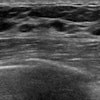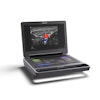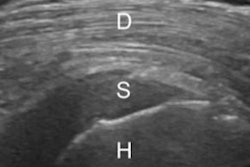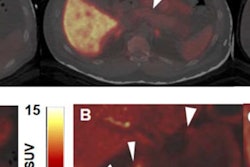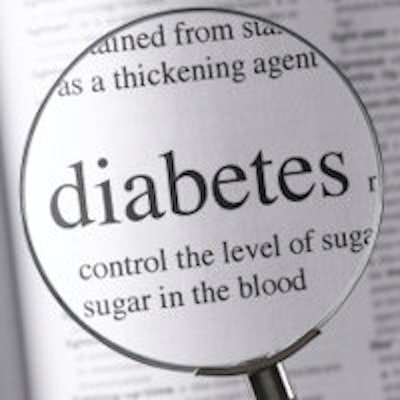
Only one technique to assess medial arterial calcification (MAC) from an ultrasound scan can also predict related cardiovascular and diabetes complications, according to a study published on March 6 in Ultrasound in Medicine & Biology.
The authors evaluated two methods for diagnosing MAC severity:
- The presence of MAC in three unique artery segments
- The length of MAC in centimeters
Only MAC identified through the segmentation method was able to independently predict whether a patient would also experience peripheral artery disease and diabetic nephropathy, the authors noted. However, both methods for calculating MAC from ultrasound scans were still valuable.
"Consistent with previous studies, the presence and severity of MAC were associated with diabetic complications in our univariate analysis, regardless of whether the length or segmentation method was used," wrote the authors, led by Jing Tian from Sun Yat-Sen Memorial Hospital in Guangzhou, China.
Ultrasound is one tool that can be used to help screen patients with diabetes for MAC, but there is no consensus on the best scoring method to evaluate MAC severity from ultrasound scans. Therefore, the authors compared two commonly used scoring systems: the segmentation method and the length method.
In the length method, MAC severity is determined based on the severity of calcification in a 4-cm scanned area. A MAC length of 0 cm, less than 1 cm, 1 to 2 cm, 2 to 3 cm, and greater than 3 cm on ultrasound scans correspond to MAC scores of 0, 1, 2, 3, and 4, respectively. The scores are then added up, with higher scores indicating higher MAC severity.
In the segmentation method, a point is given for the presence of any MAC in the superficial femoral artery to popliteal artery segment, the anterior tibial artery to dorsalis pedis artery segment, and the posterior tibial artery and peroneal artery segment. Like in the length method, the scores are added up, and higher scores indicate higher MAC severity.
The researchers used both MAC scoring methods on 359 patients with type 2 diabetes who stayed at a hospital endocrinology department between March 2015 and December 2017. A radiologist with 15 years of clinical ultrasound experience performed the bilateral lower limb artery ultrasound examinations on the patients.
About 37% of patients had MAC based on the ultrasound scan findings, but the diagnosis of mild and severe MAC differed based on the scoring approach. Using the length method, the researchers found 105 mild MAC cases and 123 severe cases, whereas the segmentation method identified 98 mild cases and 130 severe ones.
Both methods helped predict the odds of diabetic complications, including peripheral artery disease, peripheral neuropathy, retinopathy, and nephropathy. However, the segmentation method was also an independent predictor of peripheral artery disease and diabetic nephropathy, suggesting it may be better for evaluating cardiovascular abnormalities and risk for diabetes complications.
A main limitation of the study was that it only included ultrasound imaging instead of also using another imaging modality, the authors noted. However, it also demonstrated that two different ultrasound scoring methods can help predict diabetic complications -- although the segmentation might be better.
"MAC scores calculated by the segmentation method were significantly correlated with [peripheral arterial disease] and diabetic nephropathy," they concluded. "The segmentation method for assessing MAC may be a valuable tool in clinical work."


